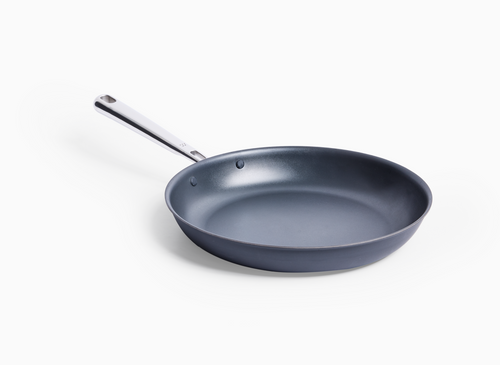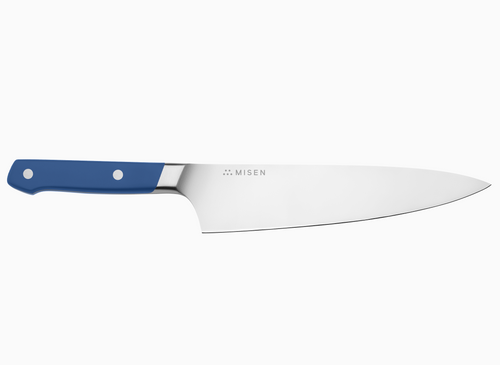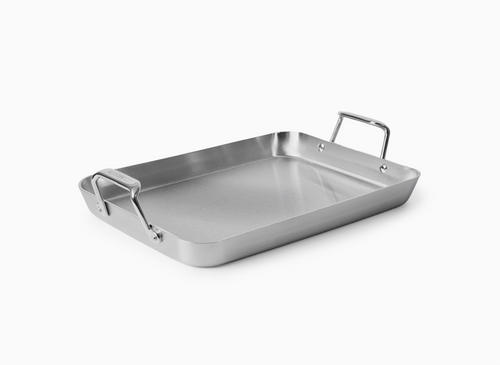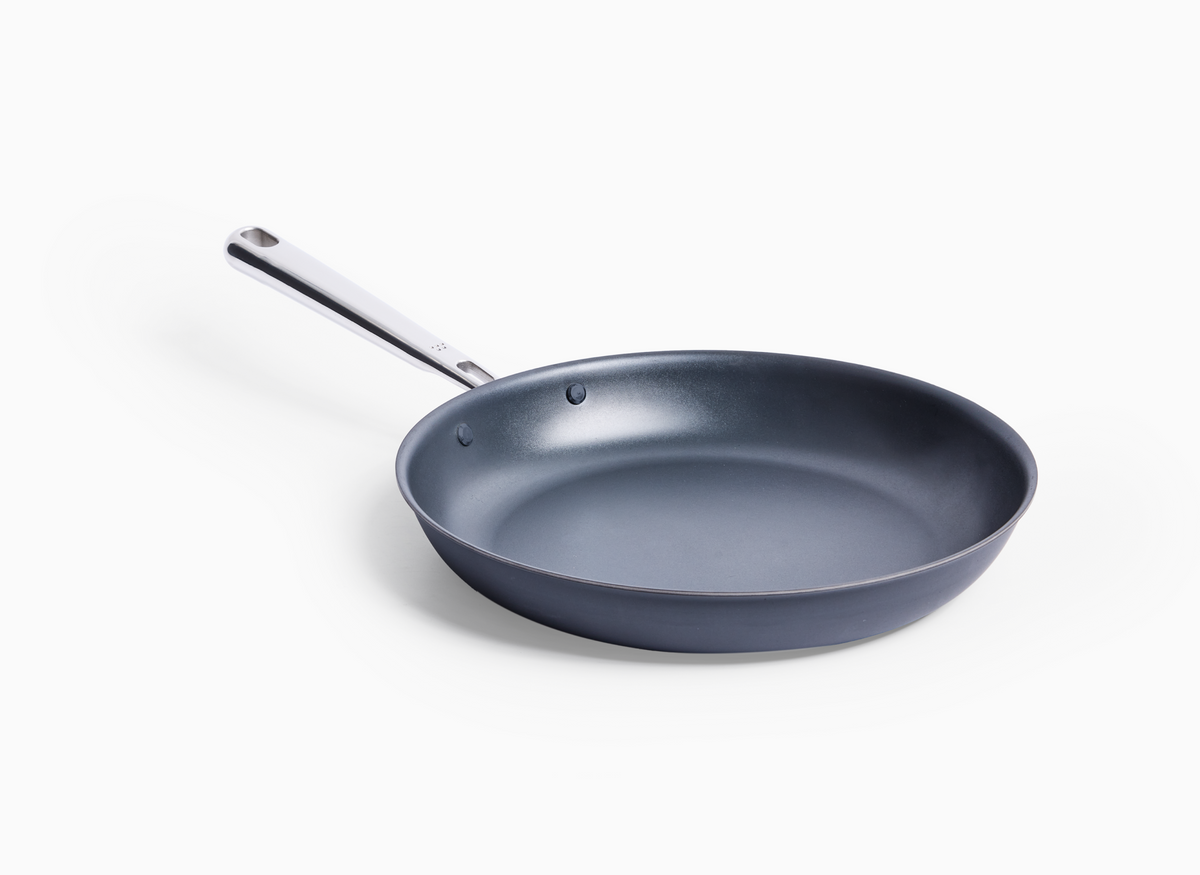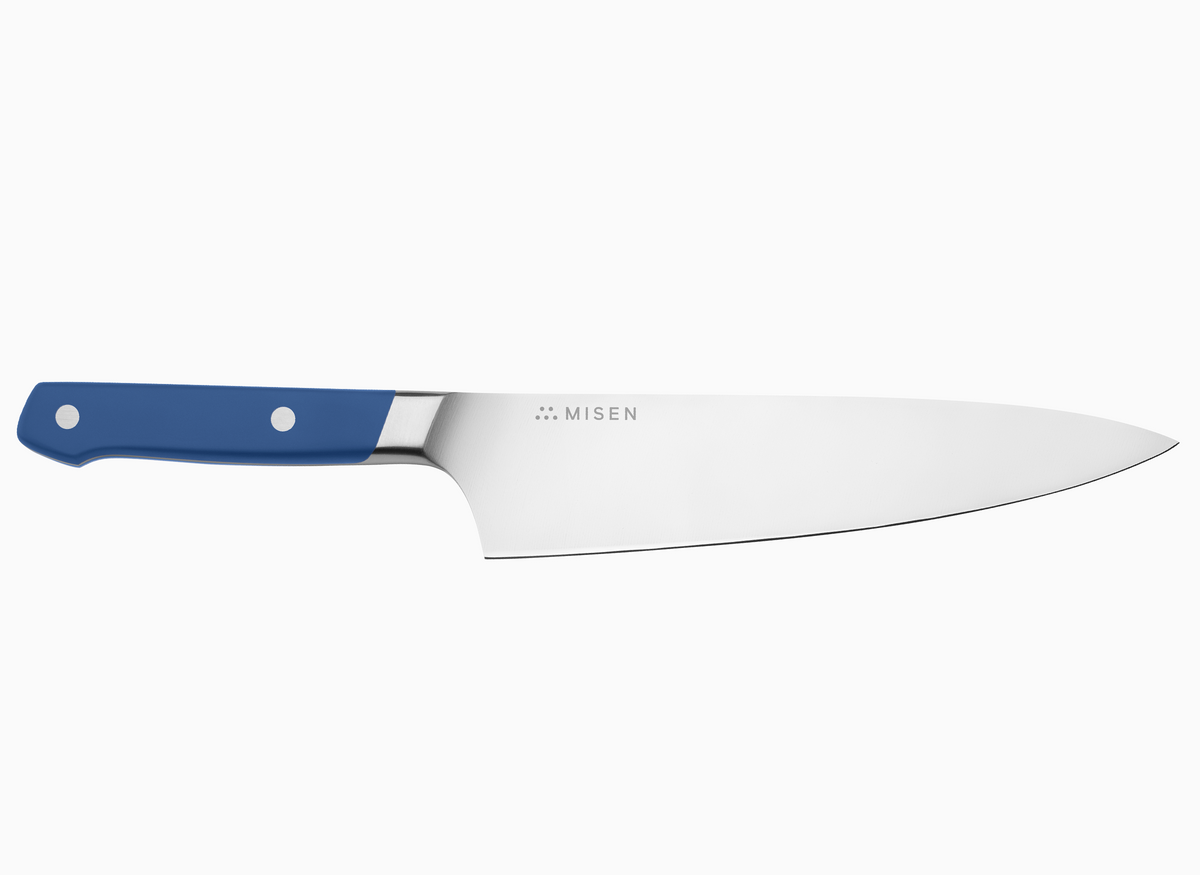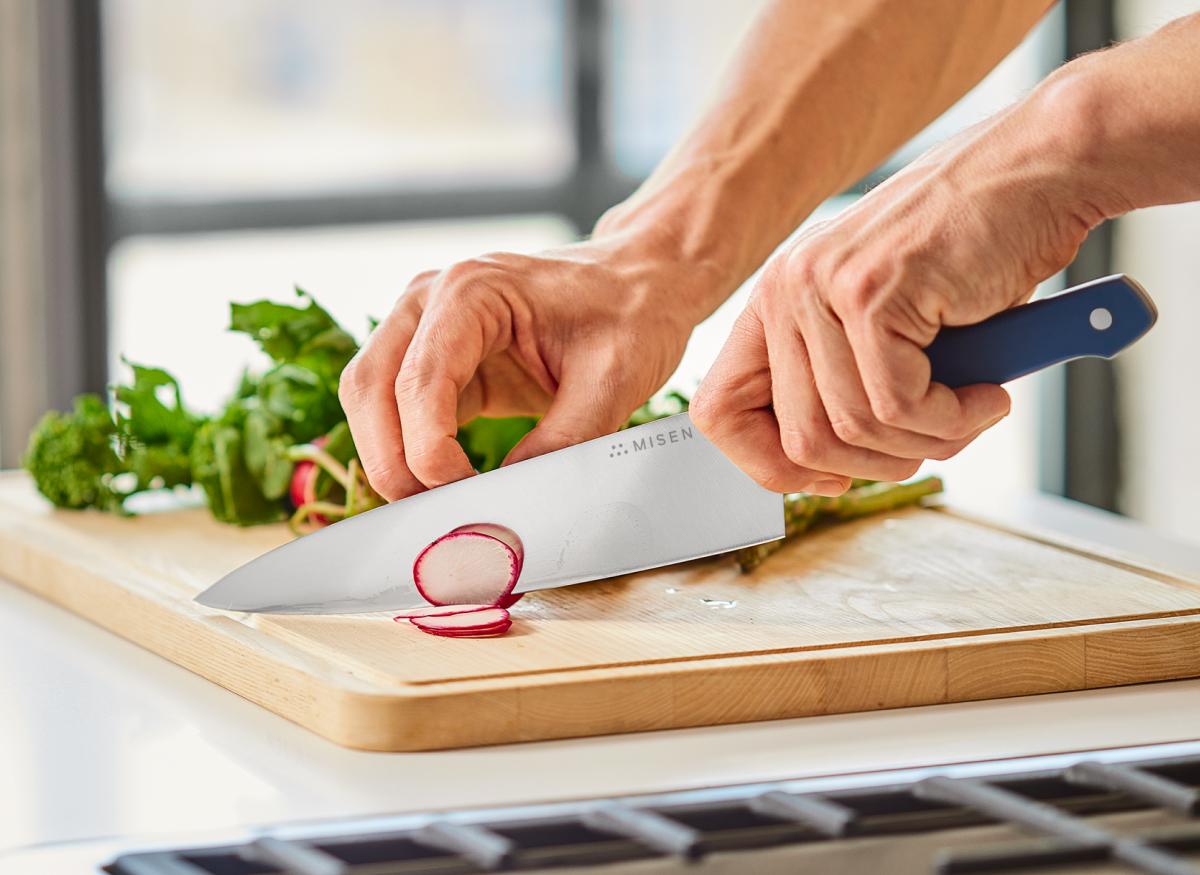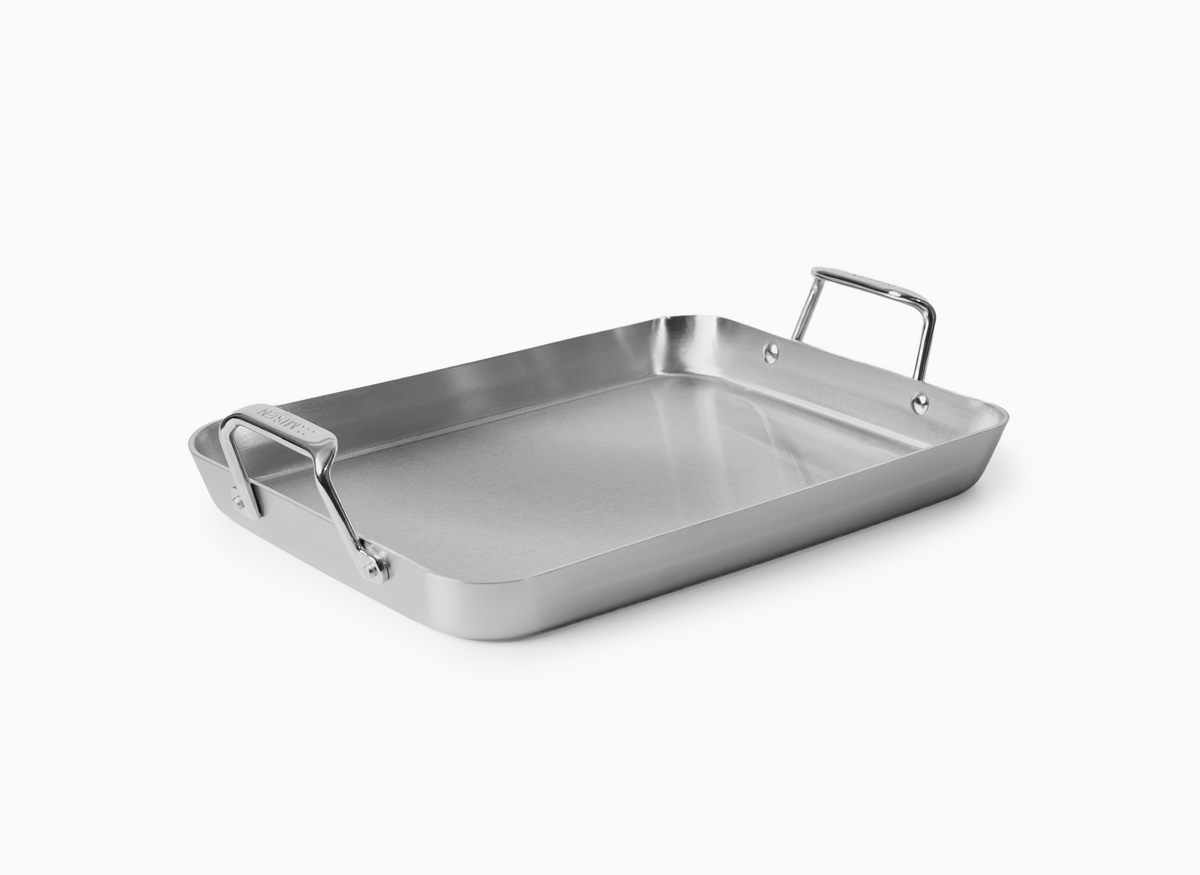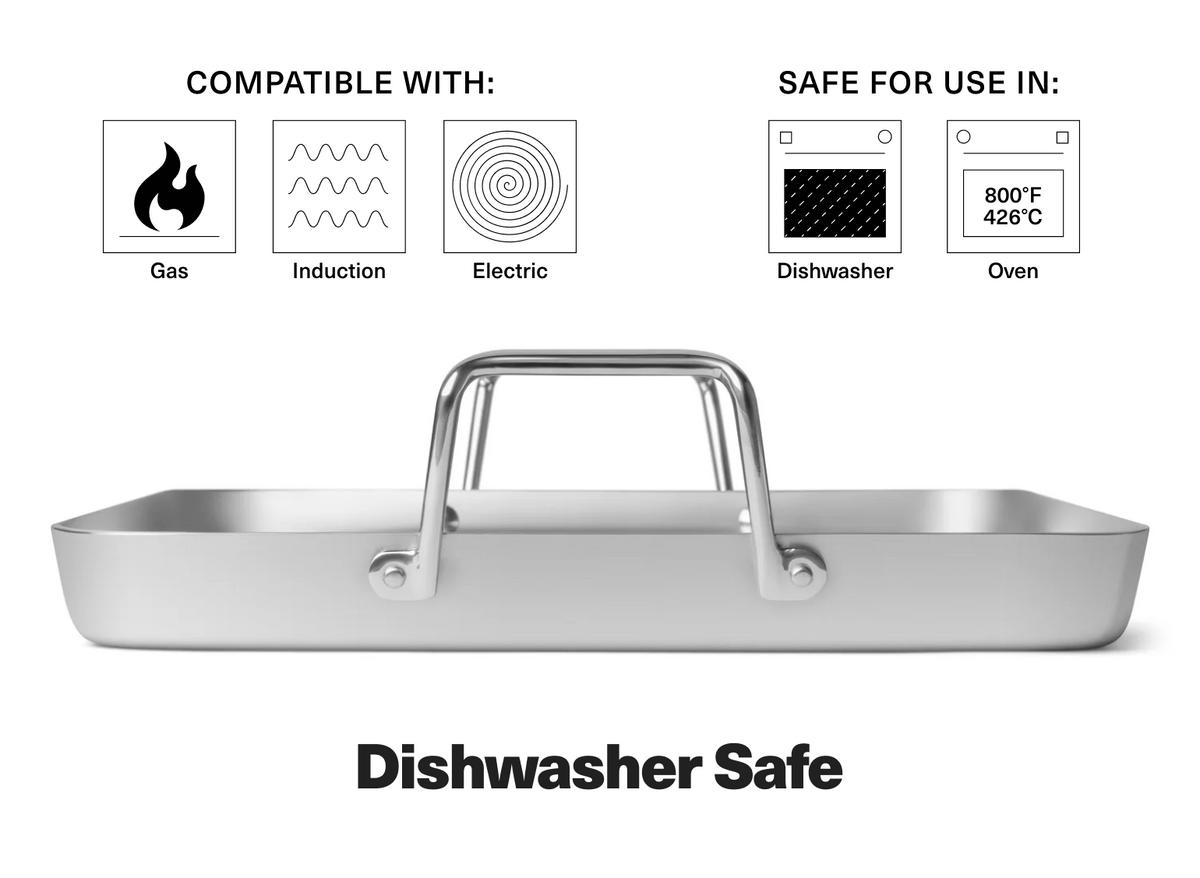Types of Knives: A Comprehensive Guide to Every Kitchen Knife
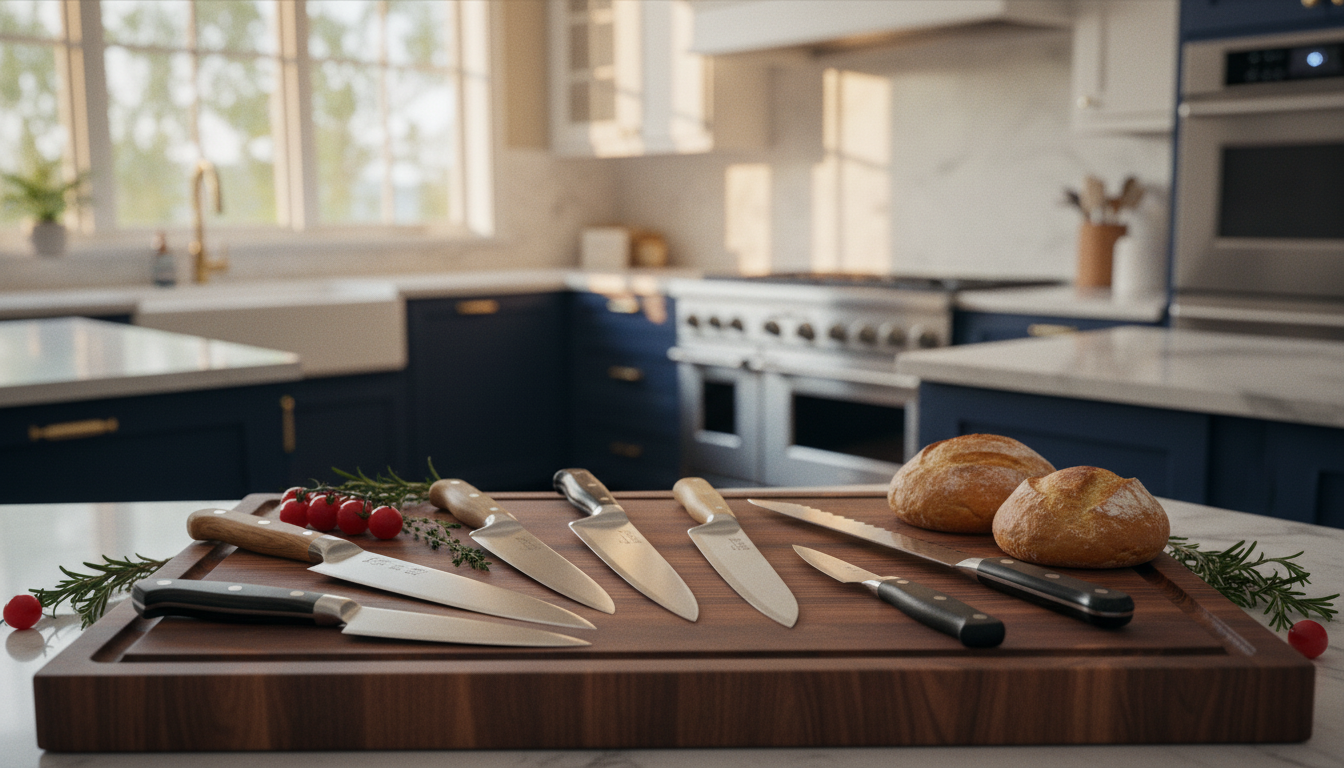
This comprehensive guide demystifies kitchen knives by revealing how blade shapes, materials, and construction methods directly impact your cooking efficiency and enjoyment, while debunking dangerous myths like dull knives being safer. You'll learn to select the perfect chef's, paring, and bread knife trio that handles 90% of kitchen tasks, understand when specialty knives like nakiri or fillet knives earn their keep, and master the crucial differences between forged versus stamped, carbon versus stainless steel, and Japanese versus Western designs. The article empowers you to make informed choices based on your cooking style and budget, explaining why a well-balanced $100 knife you maintain properly will outperform neglected premium blades, and how factors like handle materials, storage methods, and sharpening frequency dramatically extend your knives' lifetimes from years to decades. Whether you're building your first essential set or refining a collection, you'll discover that understanding knife anatomy, maintenance routines, and quality indicators transforms meal prep from frustrating chore into effortless pleasure while keeping your fingers safe and your food perfectly prepped.
Understanding the Basics of Types of Knives
Understanding that a kitchen knife's balance, blade shape, and construction style—whether forged for heft or stamped for flexibility—directly determine how efficiently and enjoyably you prep food transforms cooking from a chore into a seamless extension of your hands.
What Makes a Kitchen Knife Different?
Kitchen knives aren't just sharp pieces of metal—they're precision tools designed to make your cooking easier and more enjoyable. Unlike a pocket knife or utility blade, kitchen knives have specific features that help you prep food efficiently and safely [1]. The biggest difference? Balance and design. A well-made kitchen knife feels like an extension of your hand, with weight distributed evenly between blade and handle.
The blade shape matches its job—think of how a serrated edge grips crusty bread without squashing the soft interior, or how a chef's knife's curved edge lets you rock through herbs with minimal effort [2]. Construction matters too. While we'll dive deeper into materials later, know that kitchen knives come in two main styles: forged (shaped from heated steel for durability) and stamped (cut from steel sheets for flexibility) [1]. Each has its place in the kitchen—forged knives bring heft and stability for heavy-duty work, while stamped blades excel at delicate tasks like filleting fish. You'll also notice differences between Japanese and Western styles.
Japanese knives typically feature thinner, harder steel for laser-like precision, while Western knives have more curve and weight for versatile rocking cuts [2]. Neither is inherently better—it's about finding what works for your cooking style. The right knife doesn't just cut food; it transforms how you cook, making prep work faster, safer, and genuinely enjoyable [3].
Key Parts of a Knife and Why They Matter
Understanding a knife's anatomy helps you choose the right tool and use it effectively. The blade has several key functional areas: the tip provides precision for delicate work like scoring or detailed cuts; the edge is the primary cutting surface; and the heel offers leverage for tasks requiring force [4]. The spine (the top, non-cutting part of the blade) adds weight and strength, while some blades feature grantons—indentations that prevent food from sticking during cutting [4]. Where blade meets handle, you'll find the bolster—a thicker section that balances the knife and protects your fingers. Full bolsters create a complete finger guard but can make sharpening the heel tricky.
Half-bolsters give you finger protection while keeping the entire edge accessible for maintenance [4][6]. The tang—that's the metal extending into the handle—affects how your knife feels and performs. Full tang knives (where you can see metal through the handle) offer rock-solid stability, perfect for heavy chopping. Hidden tangs, popular in Japanese knives, create lighter, more nimble tools [5][6]. As for handles, you'll find everything from classic wood to modern composites.
Each material affects grip, maintenance, and comfort differently. Look for secure construction—whether that's visible rivets or seamless bonding—to ensure your knife stays together through years of use [5][6]. When you understand these components, choosing the right knife becomes less about marketing claims and more about finding what genuinely works for your hands and cooking style.
How Blade Shape Influences Performance
Blade shape fundamentally determines how a knife performs specific tasks. Straight-edged blades deliver clean, precise cuts ideal for slicing meats and filleting fish, while curved edges enable efficient rocking motions for chopping herbs and vegetables [7]. The curve also enhances mincing speed and reduces hand fatigue by promoting natural wrist positioning during use. Serrated blades excel at cutting foods with tough exteriors and soft interiors like bread and tomatoes, requiring less downward force to penetrate surfaces without crushing [7]. Granton edges—featuring hollowed grooves along the blade sides—create air pockets that reduce friction and prevent food from sticking during slicing [7]. Specialized shapes address particular needs: Santoku knives combine a flat edge with slight curvature, making them versatile for slicing, dicing, and mincing [7].
Nakiri knives feature rectangular blades with straight edges designed specifically for vegetable preparation, allowing full contact with the cutting board for consistent, uniform cuts [7]. Drop point blades offer a gently sloping spine that keeps the tip from unintentionally piercing food—useful for skinning or delicate work [8]. Clip points feature more acute tips for precision tasks, while tanto blades incorporate a secondary point where the edge changes direction, providing reinforced strength at the tip [8]. The bottom line? Blade shape directly impacts how efficiently and comfortably you work. A curved blade speeds up chopping with its natural rocking motion, while straight edges give you more control for precise push cuts [7][8].
Some specialty shapes, like the perfectly straight Wharncliffe edge, excel at detail work because they won't slip out of cuts [8]. But it's not just about the cutting—it's about how the knife feels during extended prep sessions. The shape determines your grip and cutting motion, which affects comfort and fatigue [7]. That's why choosing a knife isn't about finding the prettiest blade. Think about what you cook most often, how you like to cut, and what feels natural in your hand. The right shape makes cooking feel effortless, turning tedious prep into something you actually enjoy [9].
Common Misconceptions About Knife Types
Let's clear up some knife myths that might be holding back your cooking. First up: the dangerous belief that dull knives are safer. Actually, dull blades are accident magnets—they require more force to cut, making them more likely to slip and cause injuries [10]. A sharp knife glides through food with minimal pressure, giving you better control. Think stainless steel means rust-proof? Not quite. All steel can corrode if left wet, even premium stainless [11].
The "stainless" just means it resists rust better—you still need to dry your knives after washing. Here's another big one: expensive always means better. While quality matters, price often reflects brand prestige or collector appeal rather than cutting performance [12]. A well-maintained $100 knife can outperform a neglected $300 blade. What matters is finding quality construction at a price that works for you. The "one knife for everything" approach? That's like using a hammer for every home repair.
Different knives excel at different tasks—trying to slice bread with a chef's knife or chop vegetables with a serrated blade makes cooking harder than it needs to be [10]. And about those knife stereotypes: Japanese knives aren't automatically superior to Western ones. Yes, they're incredibly precise, but they're also more delicate and demanding to maintain [12]. Western knives offer durability and versatility that many home cooks prefer. Finally, that steel rod in your knife block? It's for honing (realigning the edge), not sharpening (removing metal to create a new edge) [12]. Understanding these differences helps you maintain your knives properly and avoid frustration in the kitchen.
Core Kitchen Knives Every Home Cook Needs
An 8-inch chef’s knife handles 90% of kitchen tasks with a simple rocking motion, so pick one that feels balanced in your hand and let it become your only indispensable prep partner.
Chef’s Knife – the All‑Purpose Workhorse
Your chef's knife is the real MVP of the kitchen, tackling everything from dicing onions to breaking down a whole chicken [13]. If you're going to invest in just one quality knife, make it this one—you'll use it for about 90% of your kitchen prep work. Most chef's knives range from 8 to 10 inches, though many home cooks find the 8-inch size hits the sweet spot between control and versatility [13]. The curved blade isn't just for looks—it's designed for the rocking motion that makes chopping herbs and mincing garlic so efficient.
Instead of sawing back and forth or chopping straight down, you'll rock the knife with the tip staying on the board while the blade moves through the food [13]. This technique takes a little practice, but once you get it down, you'll fly through prep work. When shopping for a chef's knife, don't just look at it—pick it up and see how it feels. The right knife should feel balanced and comfortable, like it belongs in your hand [13].
That wide blade also doubles as a bench scraper for transferring chopped ingredients from board to pan [14]. For those ready to upgrade their everyday cooking, [a quality chef's knife](https://misen. com/products/chefs-knife) transforms meal prep from chore to pleasure.
Paring Knife – Precision for Small Tasks
Think of a paring knife as your detail brush—it's perfect for all those small, precise tasks where a chef's knife feels like overkill. With a blade usually 3. 5 inches or shorter, it gives you the control you need for peeling apples, hulling strawberries, or deveining shrimp [15]. As we'll explore in building your knife collection, this little powerhouse joins your chef's knife and serrated knife to form the essential trio that handles virtually any kitchen task.
What can you actually do with it? Pretty much any delicate job: peel fruits and vegetables (yes, peeling toward yourself is actually the proper technique with practice), remove seeds and cores, segment citrus fruits, and even create simple garnishes [15]. The name comes from "pare," which means to peel away the outer surface—and that's exactly what it does best [15]. Here's what not to do: don't force it through hard vegetables like butternut squash or thick carrots.
If you're applying serious pressure, grab your chef's knife instead—pushing too hard with a paring knife is asking for a slip and a cut [15]. Save this precision tool for the jobs it was meant to handle, and it'll make your detail work feel effortless [16].
Santoku vs. Gyuto – Choosing the Right Multipurpose Blade
If you're exploring Japanese-style knives, you'll likely encounter santoku and gyuto blades—both excellent multipurpose options that bring something different to your cutting board. The santoku (meaning "three virtues" for its skill at slicing, dicing, and mincing) typically measures 165-180mm, making it compact and nimble [17]. Its flatter edge sits flush against the board, perfect for those clean, uniform vegetable cuts that make your dishes look restaurant-ready [17][18]. The gyuto is essentially the Japanese take on a Western chef's knife, usually running 210-240mm with a more curved edge and pointed tip [17].
This curve lets you rock-chop like you would with a traditional chef's knife, while the sharp point handles precision work like removing silver skin from meat [17][19]. That extra length really shines when you're working with large cabbages or portioning roasts—fewer strokes mean cleaner cuts [18]. Your cutting style matters here: santoku knives work best with an up-and-down chopping motion, lifting the blade completely off the board. Gyuto knives support both this technique and the Western rock-chop where the tip stays planted [19].
Go santoku if you want something lightweight and agile for a smaller kitchen. Choose gyuto if you tackle varied ingredients and want the versatility to switch between cutting techniques [18][19]. Either way, you're getting exceptional sharpness and precision—the steel quality matters more than the specific style for most home cooking [18][19].
Bread Knife – Slicing Without Crushing
A good bread knife does one thing brilliantly: it saws through crusty bread without squashing the soft interior into a pancake. These serrated blades (called pankiri in Japanese kitchens) typically run 9 inches or longer, with either scalloped or pointed serrations [20]. Pro tip: scalloped edges cut more smoothly since they work in both directions, not just on the pull stroke [20]. Don't pigeonhole your bread knife though—it's surprisingly versatile.
Beyond slicing sourdough, it handles delicate pastries, soft tomatoes, and even carves leftover roasts when your carving knife is dirty [20]. Size matters for different tasks: a compact 7-8 inch blade is perfect for bagels and sandwich rolls, while you'll want 10-12 inches for those big artisan loaves [20]. Most bread knives use stainless steel for easy care, though some feature high-carbon stainless for better edge retention [20]. Here's the catch with serrated knives: they're trickier to sharpen than straight blades, requiring special tools or professional service.
Treat yours well—hand wash only, store it protected, and it'll serve you faithfully for years [20]. As you build your essential knife collection (covered in our budget guide), remember this workhorse rounds out your core trio alongside chef's and paring knives.
Specialty Knives for Specific Tasks
Choose the Nakiri for effortless home-veg prep and the Usuba only when you’re ready to master weighty, single-bevel precision; grab a stiff boning knife to break meat from bone and a flexible fillet blade to glide along fish curves for flawless fillets.
Nakiri and Usuba – Mastering Vegetable Prep
If you're serious about vegetable prep, understanding the difference between Nakiri and Usuba knives helps you choose the right tool. The Nakiri (meaning "leaf cut") features a double-beveled blade that's perfect for home kitchens, while the Usuba ("thin blade") is a single-beveled professional knife [21]. Both share the same flat blade profile without any curve, which makes them ideal for the precise push-cutting and chopping you need for Japanese cuisine [21].
Here's what sets them apart: The Usuba weighs up to 40% more than a Nakiri of the same length and demands serious skill to use and maintain [21]. For most home cooks, the Nakiri makes more sense—it's easier to sharpen, less fragile, more versatile, and won't break your budget [21]. Go with a Nakiri if you prep lots of vegetables and want a specialized knife that's still approachable.
Save the Usuba for when you're ready to master traditional Japanese cutting techniques and don't mind the extra maintenance [21]. Both knives excel at those Instagram-worthy cuts like sengiri (julienne) and katsuramuki (rotary peeling) that elevate your soups, salads, and Japanese dishes [21].
Boning and Fillet Knives – Handling Meat and Fish Safely
Don't let their similar looks fool you—boning and fillet knives tackle completely different jobs in your kitchen. Boning knives come with relatively stiff, narrow blades (5-7 inches) and pointed tips that give you the precision and strength to separate meat from bones [22]. That rigidity is exactly what you need to work through tough joints and sinews in beef, pork, and poultry [23]. Fillet knives take a different approach with longer, flexible blades (7-9 inches) that bend to follow the natural curves of fish [23].
This flexibility lets you make smooth, clean cuts when removing skin, creating perfect fillets, and working around those tiny pin bones [23]. Here's when to use each: Grab your boning knife for breaking down chicken, trimming fat from beef, or butterflying meat for stuffing [22]. Switch to a fillet knife when fish is on the menu—its flexible design prevents tearing delicate flesh and helps you get every bit of meat [24]. Each knife demands its own technique too.
Boning knives work best with firm, controlled movements that follow the natural separation points between meat and bone. Fillet knives need a lighter touch with long, low-angle strokes along the cutting surface [23]. Keep both in your kitchen and you'll handle any protein prep with confidence and minimal waste [24].
Steak and Carving Knives – Serving with Confidence
When it's time to serve, the right knife makes all the difference. Carving knives bring elegance to your table with their long, thin blades (typically 15 inches) that feature indentations to prevent sticking [25].
Sometimes called a tranchelard, a good carving knife glides through turkey, ham, and roasts without tearing the meat fibers—you can adjust thickness to match exactly what your guests want [25]. That extra blade length matters more than you might think.
Longer blades mean less sawing and more attractive, clean slices that look as good as they taste [26].
Utility and Tomato Knives – Niche Cuts Made Easy
Sometimes you need a knife that's just right—not too big, not too small.
Choosing the Right Knife Material and Construction
Choose carbon steel for razor-sharp performance you’ll need to baby with oil and drying, stainless for carefree rust-proof convenience you’ll sharpen more often, or premium powder stainless if you’ll pay $300+ for both—and pick forged for heft or stamped for lightness.
High‑Carbon Stainless Steel vs. Carbon Steel – Pros and Cons
Choosing between high-carbon stainless steel and carbon steel comes down to your priorities: performance or convenience. Carbon steel blades (containing 0. 6% to 1. 5% carbon) get sharper and stay sharp longer—you'll love how easily they glide through precise cuts and how quickly they sharpen back to razor-like edges [30]. But here's the trade-off: carbon steel needs attention. Leave it wet for even a few minutes and you'll see rust spots forming [29].
You'll need to dry it immediately after use and apply a thin coat of oil regularly (as we'll cover in the care section). Stainless steel makes life easier. With at least 10. 5% chromium creating a protective layer, these knives resist rust and basically take care of themselves—just wash, dry, and put away [29][30]. They're perfect if you're busy, live in a humid climate, or simply want low-maintenance tools. The downside?
They'll need sharpening more often and require more effort to get that razor edge back [30]. So which should you choose? If you enjoy the ritual of knife care and want peak performance, go carbon steel [28]. If you want reliable, no-fuss knives that perform well without babying, stainless is your friend. Want the best of both worlds? Modern powder stainless steels like SG2/R2 deliver carbon-steel performance with stainless-steel convenience—though you'll pay premium prices starting around $300 [29].
Forged vs. Stamped Blades – Durability and Price
Let's demystify forged versus stamped knives—it's not as complicated as it sounds. Forged knives start as steel heated to 1,800-2,100°F, then hammered into shape. This process compresses the steel, creating denser, stronger blades with those characteristic thick bolsters you see where blade meets handle [31][32]. You'll feel the difference immediately: forged knives have satisfying heft, better balance, and that solid-in-your-hand feeling that makes cutting feel effortless. Stamped knives work differently—they're cut from steel sheets (think cookie cutter) [32].
This makes them lighter, more flexible, and much more affordable [31]. They're not inferior, just different. Without the thick bolster and often with partial tangs, they won't have that same balanced feel, and yes, you'll sharpen them more frequently [33]. But for many home cooks, that's a fair trade-off for the price. Here's how to decide: Forged knives cost 2-3 times more but can literally last generations with proper care (see our [knife sharpening guide](https://misen.
com/products/mail-in-knife-sharpening) for maintenance tips) [33]. They resist chipping, hold edges longer, and feel substantial during use. Stamped knives get the job done at a fraction of the cost—perfect if you're building your first kitchen or want decent backups [32]. Think of it this way: forged for heirloom quality, stamped for practical value.
Handle Materials That Feel Good and Last
Your knife handle matters more than you might think—it's what you'll grip for hours of prep work. Natural wood handles feel warm and look beautiful, with unique grain patterns that make each knife special. But untreated wood can be high-maintenance, shrinking or cracking when exposed to moisture and temperature changes [34]. That's why stabilized wood (infused with resin) offers a smart compromise—you get wood's natural beauty without the headaches [34]. For worry-free performance, consider modern composites.
Pakkawood combines real wood veneers with resin for that classic look minus the maintenance. Micarta (resin-bonded fabric or paper) takes durability even further—it laughs off water, acids, and heavy use while still feeling great in your hand [34]. Synthetic handles like G-10 fiberglass give you incredible grip even when wet, plus they're practically bulletproof [35]. Carbon fiber offers similar benefits with less weight, though you'll pay for that high-tech advantage. Budget-friendly options like molded FRN still perform well—they just won't feel as refined [35].
Metal handles? Titanium feels surprisingly warm and resists everything, while aluminum stays cold to the touch. Full metal handles clean up beautifully but can get slippery—not ideal when you're working fast [34][35]. Our advice: Choose handles that feel comfortable during long prep sessions and can handle getting wet. For most home cooks, that means composites like G-10, Micarta, or stabilized wood—the sweet spot of comfort, durability, and easy care [35].
Assessing Balance and Weight for Everyday Use
Balance and weight make the difference between effortless prep and kitchen fatigue. Here's a simple test: rest any knife horizontally on your finger right at the bolster (where blade meets handle). A well-balanced knife stays level—no tipping. This balance makes the knife feel like it's doing the work for you, not against you [36]. Weight preferences are personal, but here's what works: Heavier knives power through dense ingredients like butternut squash or bone-in chicken with less effort from you. Lighter knives dance through herbs and vegetables, reducing hand fatigue during those marathon meal-prep sessions [36]. Professional chefs test knives by doing repetitive cuts—mincing parsley, dicing onions—to see how their hands feel after 10 minutes.
Try this yourself when knife shopping. Does your wrist ache? Does the knife feel like it's fighting you? That's poor balance talking [36]. Match your knife to your cooking style. Love breaking down whole chickens and tackling tough vegetables? You'll appreciate some heft.
Mostly chopping herbs and slicing tomatoes? Go lighter [37]. The best knife disappears in your hand—you're thinking about the food, not the tool. Poor balance, on the other hand, makes every cut feel like work and increases your risk of slipping [37]. Bottom line: Don't just pick up a knife and put it down. Rock it, chop with it, see how it feels after a minute or two. Your hands will tell you everything you need to know.
Caring for Your Knives to Extend Their Life
Master your knife's 15–20° angle, soak a dual-grit whetstone for 45 minutes, and glide the blade in one smooth motion—then keep it razor-sharp daily with light honing strokes—to double its lifespan while avoiding the metal-chewing damage of electric sharpeners.
Proper Sharpening Techniques and Tools
Knowing your knife makes all the difference when it's time to sharpen. Start by checking what you're working with—carbon steel knives are more forgiving to sharpen than stainless steel, while high-carbon stainless gives you the best of both worlds [38]. Find your blade's angle (usually 15-20 degrees) by holding it perpendicular to your eye and looking from tip to heel [38]. Whetstones give you the best edge with the least wear on your blade, though they do take some practice. You'll want two stones to start: a medium grit (around 800) for bringing back the edge and a fine grit (at least 2,000) for that final polish [39]. Here's the key—soak your whetstone for 45 minutes before starting so it doesn't dry out mid-sharpening [39]. The technique itself is simpler than you might think.
Keep a steady 15-20 degree angle and use firm but gentle pressure as you glide the blade across the stone [39]. Start with the heel at the far edge, then pull toward yourself while moving the contact point toward the tip—it's one smooth motion [39]. You'll know you're making progress when you feel a tiny burr form on the opposite side. That's your cue to flip and work the other edge [39]. While electric sharpeners are tempting for their convenience, they're pretty aggressive and can actually shorten your knife's life by removing too much metal [39]. Between sharpenings, grab a honing rod—it's your knife's best friend for daily maintenance. Honing doesn't remove metal; it just straightens those microscopic teeth on your blade's edge [40].
Stand the rod vertically with its tip on your cutting board, keep that same angle as your knife, and draw the blade down and across from heel to tip [40]. Light, consistent strokes on both sides keep your edge true [40]. Watch out for these common slip-ups: changing your angle mid-stroke (hello, uneven edge), pressing too hard, or trying to hone a genuinely dull knife—that's like trying to fix a flat tire with air when you need a patch [40]. For knives that need serious help or tricky blades like serrated edges, there's no shame in calling in the pros. Professional [knife sharpening](https://misen. com/products/mail-in-knife-sharpening) services can bring even well-loved blades back to life [38].
Daily Maintenance: Cleaning, Drying, and Storage
Taking care of your knives daily is way easier than you'd think—and it makes a huge difference in how long they last. The golden rule? Always hand-wash with warm, soapy water and a soft sponge right after using them. Skip the dishwasher entirely—the heat, harsh detergents, and all that banging around will wreck both your blade and handle [41]. Give your knives a quick rinse between tasks, especially after cutting acidic foods like citrus, tomatoes, or onions. These acids can actually eat away at your edge and make knives dull faster [42].
Once washed, dry them completely with an absorbent towel (paper towels work great). Even stainless steel has some carbon in it, so leaving knives wet can cause those mysterious spots and discoloration [41]. Got carbon steel knives? They need a bit of extra love. After drying, rub on a thin layer of food-safe oil like camellia oil. This creates a protective barrier against moisture and acids while helping develop that beautiful patina carbon steel is known for—without the rust [41].
Smart storage keeps your edges sharp and your fingers safe. Here are your best options: wooden magnetic strips that display your knives beautifully without dulling; knife blocks that protect blades while keeping your counter organized; blade guards for safe drawer storage; or sheaths and sayas when you need to transport your knives [43]. Whatever you do, never toss unprotected knives in a drawer—they'll bang against other utensils, damaging edges and creating a dangerous surprise when you reach in [42]. Here's the thing—these habits take maybe a minute total, but they transform your knives from tools that need replacing to kitchen companions that last for years [42].
Protecting Edges with Knife Blocks, Magnetic Strips, or Sleeves
How you store your knives matters just as much as how you use them. Magnetic strips are fantastic for keeping knives visible and accessible, but there's a trick to using them right. Always place the spine against the strip first, then gently roll the blade until the edge touches the magnet [46]. When removing, do the opposite—this protects your carefully maintained edge. Go for wooden magnetic strips instead of metal ones—they're quieter, gentler on your blades, and keep knives from sliding around [44].
The best strips have strong magnetic fields (800+ Gs or higher) with continuous magnets, not those segmented ones that leave gaps [44]. Knife blocks are another great option, but here's what most people get wrong: store your knives with the edge facing up, not down. This simple switch prevents the blade from dragging against the wood every time you grab it or put it away [46]. It's a small change that makes a big difference in how often you'll need to sharpen. For drawer storage, knife guards are your best bet.
Look for soft cork-lined docks or BPA-free plastic sheaths that keep blades from knocking into other utensils or the drawer itself [45]. These guards really shine when you're transporting knives or dealing with crowded kitchen drawers where accidents are just waiting to happen. No matter which storage method you choose, make sure your knives are bone dry first. Even a little moisture trapped in storage can lead to corrosion that damages your edge [44].
When to Re‑Sharpen or Replace a Blade
How often you sharpen depends on how much you cook. If you're making meals a few times a week, twice-yearly sharpening keeps you in good shape. Daily cooks should plan on every three months [47]. Professional kitchens play by different rules—restaurants sharpen every other month, while busy butcher shops do it monthly [48]. Your knife will tell you when it needs attention.
Watch for these signs: struggling to slice soft foods like tomatoes or avocados, needing to press harder than usual, visible chips or dings along the edge, or food sticking to the blade when it used to glide through [47]. Here's something people often confuse—honing and sharpening aren't the same thing. Honing (which you should do weekly) just straightens your edge without removing any metal. Sharpening actually removes material to create a new edge [47]. Think of honing as daily maintenance and sharpening as the occasional tune-up.
Don't hesitate to call in professional help for seriously dull knives, damaged blades, or tricky items like serrated knives that need special equipment [47]. A well-loved knife can last twice as long as a neglected one, so regular care really pays off [47]. Make it easy on yourself—tie sharpening to the seasons. A spring and fall sharpening routine is simple to remember and keeps your knives performing their best year-round [48].
Building a Balanced Knife Set on a Budget
Grab three smart buys—an 8-inch chef’s, a 3¼-inch paring, and a 10-inch serrated knife—for about $100-$250 total, and you’ll own 90% of the cutting power you’ll ever need without wasting cash on filler.
Prioritising Essential Knives First
Building a functional kitchen knife collection doesn't require breaking the bank—it's about choosing versatile tools that handle most cooking tasks. Start with an 8-inch chef's knife, your kitchen's true workhorse. If you could own just one knife, this would be it [49]. A quality chef's knife handles everything from chopping vegetables to breaking down meat, with solid options starting around $100 that offer better balance and edge retention [49].
Next, add a 3. 25-inch paring knife for precision work like peeling fruits and creating garnishes. Look for models that feel comfortable in your hand and maintain their edge well [49]. Complete your essential trio with a 10-inch serrated bread knife—it's not just for bread.
This versatile tool also handles soft fruits and can even carve roasts [49]. These three knives tackle about 90% of kitchen cutting tasks without requiring specialty tools [49]. Focus your budget on quality for these core pieces rather than buying a large set with knives you'll rarely use. By prioritizing functionality over quantity, you'll build a collection that actually works for your cooking style.
Finding Quality Without Overspending
Finding quality doesn't mean overspending. For home cooks preparing meals several times weekly, the $100-$250 range hits the sweet spot, though excellent options exist at lower prices too [50]. When evaluating knives, look for practical features that indicate quality: full tang construction (where the blade extends through the handle), good balance, and a comfortable grip matter more than flashy marketing [51]. High-carbon stainless steel delivers the best of both worlds—solid edge retention without demanding maintenance [51].
You don't need to spend a fortune for performance. Many budget-friendly options deliver professional results at accessible prices [51]. Look for knives with comfortable handles that maintain grip even when wet—especially important during longer prep sessions [52]. German steel with proper heat treatment offers excellent edge retention without the premium price tag [52].
Some Japanese-style chef's knives around $70 perform like blades costing three times more [50]. Here's a smart approach: invest in the knives you'll use daily—an 8-inch chef's knife, a paring knife, and a serrated bread knife. As we've covered earlier, these three handle most kitchen tasks [52]. Skip the large sets filled with knives that'll gather dust.
Mixing Core and Specialty Pieces Wisely
Smart collection building starts with the essentials we've discussed throughout this guide: a chef's knife (or santoku/gyuto), a paring knife, and a serrated bread knife [55]. Focus on quality for these workhorses first—especially your chef's knife—before thinking about specialty pieces [55]. When you're ready to expand, let your actual cooking guide you, not collector's impulse. Pay attention to tasks where your core knives feel inefficient [53]. Do you prep vegetables daily? A nakiri might earn its place.
Cook fish regularly? A dedicated fillet knife makes sense. Love serving steaks? Quality steak knives enhance the whole dining experience [53]. Before buying any specialty knife, ask yourself: does this duplicate something I already own? Utility knives often overlap with chef's knife functions [54].
Skip pre-packaged sets loaded with rarely-used pieces. Instead, build a personalized collection based on what you actually cook [55]. This approach saves money and ensures every knife earns its storage space through regular use [54]. For maximum versatility on a budget, consider Japanese-Western hybrid designs like the kiritsuke, which combines multiple cutting techniques in one blade [53]. Remember, a thoughtfully chosen collection of three to five knives that you use regularly beats a drawer full of neglected blades every time.
Tips for Long‑Term Value and Reducing Landfill Waste
Think of quality knives as lifetime investments, not disposable tools. With proper care, a well-made blade can serve you for decades—some even last a century—breaking the cycle of constantly replacing cheap alternatives [56].
Simple maintenance extends knife life significantly. Apply food-grade mineral oil to wooden handles to prevent cracking [56].
- A chef's knife, paring knife, and serrated bread knife handle 90% of kitchen tasks.
- Forged knives last generations but cost 2–3× more than stamped, which flex and cost less.
- Carbon steel takes a sharper, longer edge but rusts fast; stainless trades ease for frequent sharpening.
- Balance the knife horizontally on a finger at the bolster—level means less wrist fatigue.
- Hand-wash, dry immediately, and store in blocks edge-up or on wooden magnetic strips to protect edges.
- Hone weekly to straighten; sharpen 2–4× yearly (or when tomatoes resist) to restore the edge.
- Start with three quality essentials; add specialty knives only for tasks you cook daily.
- https://www.webstaurantstore.com/guide/538/types-of-knives.html?srsltid=AfmBOoomcHJqfNbW50uW-WqjIse4MO3IZbaAOmSLW4WV7Ls_uUoHgNvt
- https://www.escoffier.edu/blog/culinary-arts/different-knives-and-the-best-uses-for-each/
- https://kamikoto.com/blogs/fundamentals/understanding-kitchen-knives-types?srsltid=AfmBOoo50q-Y-QQUhLnUYFnmhbE3eJEv7Dps-rjmxkGc2TlijZiovL8S
- https://schmidtbrothers.com/blogs/knives-and-stuff/anatomy-of-a-knife?srsltid=AfmBOorlrClAJiDblvjAlwIwG-6X7DTtoZtBf-1DFEdyd4KRSllDCcKz
- https://knifeaid.com/blogs/knife-mastery/anatomy-of-a-knife?srsltid=AfmBOooF9P54AogFAajmHJ3VSeChOfwtFazuXOSQ-huEdBi5uj-IzOFe
- https://elementknife.com/pages/kitchen-knife-anatomy?srsltid=AfmBOorgLE2jwPVHZa9tClqOXZ2OlFGFC-3fxTgQcBUCr9FWMha0D46t
- https://www.insight-kitchenknife.com/how-do-different-blade-shapes-affect-the-performance-of-a-chef-s-knife.html
- https://www.knifecenter.com/knife-buying-guides-expert-advice/article/knife-blade-shape-guide?srsltid=AfmBOorRKQrjFu-rg3BEi5tgda_GvVKFlSxb2ks6-MAVDWGLmnsMjC7n
- https://www.qspknife.com/blogs/news/ultimate-knife-selection-best-blade-shapes?srsltid=AfmBOopK0u1Ju5nQZyx3fme_BL34h9id-1CGSxt9LfWsSOSI8u9y4Mfv
- https://theknifeconnection.com/blog/debunked-myths-and-misconceptions-about-knives/
- https://eknives.com/blog/debunking-9-knife-myths/
- https://kakushin.ca/blogs/blogs/7-myths-about-kitchen-knives-you-must-know
- https://www.onceuponachef.com/how-to/7-kitchen-knives-every-cook-needs.html
- https://www.flavorish.ai/blog/5-common-kitchen-knives-and-when-to-use-them
- https://www.escoffier.edu/blog/recipes/paring-knife-101/
- https://nogentknives.com/mastering-the-paring-knife/
- https://knifewear.com/en-us/blogs/articles/santoku-v-s-gyuto-the-best-multipurpose-kitchen-knife?srsltid=AfmBOori4c7zI4d9H78Gly_Hr3CthFPAd7e66mKevm8UR4kRlGVdpnl-
- https://zahocho.com/blogs/japanese-knife-101/santoku-vs-gyuto-knife-guide?srsltid=AfmBOopy7i7tYjgXnovmttgK4P9p5giDQix8WQ3OkhHMhUoyN-VGIw3D
- https://japanesetaste.com/blogs/japanese-taste-blog/gyuto-vs-santoku-which-is-best-introducing-two-great-japanese-knives
- https://www.chuboknives.com/blogs/news/what-is-a-bread-knife
- https://knifejapan.com/nakiri-vs-usuba-which-to-buy/
- https://sharpedgeshop.com/blogs/knife-types/boning-vs-filleting-knife-the-ultimate-comparison?srsltid=AfmBOopHQPS0EJ2ILUTm0SpqCcYTG7-p8sKYe2HmNv1bWj-fiswgKC1S
- https://kyokuknives.com/blogs/kyoku-chef-blog/boning-knife-vs-fillet-knife?srsltid=AfmBOoo_Jc39I0Maf1X1ebGNSvouvfMy_Ar3NNi4tAJrjqHudSmIJfTW
- https://blog.gunterwilhelm.com/boning-vs-fillet-knives-whats-the-difference-and-how-to-choose/
- https://www.couteaux-morta.com/en/which-meat-cutter-knife/
- https://en.tyrolitlife.com/guide/knife-guide/the-meat-knife-a-comprehensive-overview/
- https://www.victorinox.com/en-US/Cutlery/Information/Which-knife-does-what/cms/whichknifedoeswhat/
- https://foldedsteel.com/blogs/learn-chef-knives/high-carbon-vs-stainless-time-to-cut-the-debate?srsltid=AfmBOorLpvAbzbLAWvQdRVFV3Yh6kiRmOKEmbpYFOqiyf1bEZLhPWytS
- https://www.chefs-edge.com/blogs/knife-information/carbon-steel-v-stainless-steel-whats-better
- https://www.opinel-usa.com/blogs/news/stainless-steel-vs-carbon-steel-knives
- https://theforgedblade.com/blogs/articles/stamped-vs-forged-knife?srsltid=AfmBOor-bbBSGQuRUHh9p0HSqWnmcrio_vwymxQiOBby79tiOT3MPqXo
- https://www.oserm.com/blogs/news/forged-vs-stamped-knives?srsltid=AfmBOooE3dolLfjXA2zQHlp8m5b79ZKqfFAKeAaglnYUKRxyfkkF4OeI
- https://oishya.com/journal/forged-vs-stamped-knives-whats-the-difference/
- https://www.knifeopedia.com/material
- https://knifeinformer.com/the-ultimate-guide-to-knife-handle-materials/
- https://www.ignitedcutlery.com/blogs/news/knife-weight-and-balance-why-it-matters-more-than-you-think?srsltid=AfmBOooWKIHqbR-Si7pHVpW-wxJa6_E83gLYIXrgTPXBTzTthQyc5gI4
- https://www.cutluxe.com/blogs/chef/knife-design-isn-t-just-looks-why-shape-balance-comfort-matter?srsltid=AfmBOooVup87Y7QirvraNDD4A9vyrq-k5RHk7ni31qhd6wccVAJHUN0w
- https://www.nytimes.com/wirecutter/reviews/how-to-sharpen-knives-correctly/
- https://www.seriouseats.com/knife-skills-how-to-sharpen-a-knife
- https://www.lansky.com/resources/post/how-to-use-a-sharpening-rod.html
- https://towncutler.com/pages/care-and-maintenance?srsltid=AfmBOorObHi3ihOZbeZoB_LB_XMlfxdd9GaTgN8J_7ioMrcpSfSq-Gaq
- https://www.nytimes.com/wirecutter/guides/how-to-care-for-kitchen-knives/
- https://sharpedgeshop.com/blogs/knives-101/guide-maintenance-of-kitchen-knives?srsltid=AfmBOopQ7lT7rNrM_qjTC6Yki41f5aH5YwSYA4-JGRfa1s0GLmm44mu1
- https://www.seriouseats.com/best-magnetic-knife-holders-6674325
- https://www.epicurious.com/expert-advice/best-knife-storage-blocks-magnetic-strips-article
- https://www.cnet.com/home/kitchen-and-household/if-you-keep-kitchen-knives-in-a-block-this-simple-trick-will-keep-them-sharp-for-longer/
- https://www.houseofkeysbc.com/post/how-often-should-you-sharpen-your-kitchen-knives-and-signs-they-need-it
- https://seriouslyfastsharpening.com/how-often-sharpen-knives
- https://www.nytimes.com/wirecutter/lists/build-your-own-knife-set/
- https://www.eater.com/24364456/best-chefs-knives
- https://www.goodhousekeeping.com/cooking-tools/best-kitchen-knives/g646/best-kitchen-cutlery/
- https://www.nothingbutknives.com/best-kitchen-knife-sets-under-100/
- https://chopchopusa.com/blogs/news/how-to-choose-the-best-kitchen-knife
- https://louismartincustomknives.com/ultimate-guide-to-kitchen-knife-set/
- https://mylescooks.substack.com/p/the-knife-guide
- https://nogentknives.com/eco-friendly-knife-care-sustainable-practices-for-longevity/
- https://wusthof.de/en-at/blogs/the-chefs-table/the-timeless-sustainability-of-wusthof-knives
- https://roselli.fi/en/blogs/blog/sustainable-cooking-with-roselli-kitchen-knives
